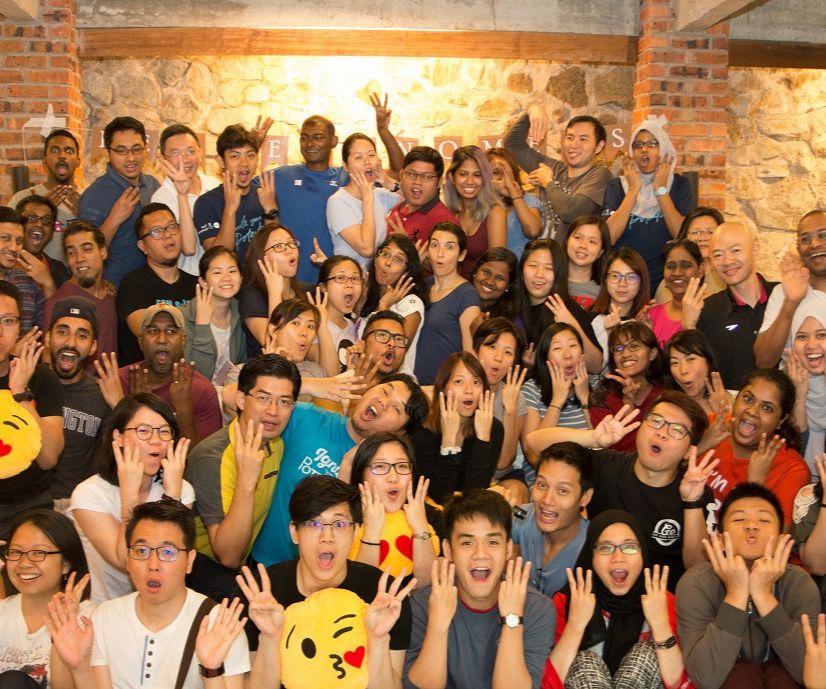The Truth About Diversity

As a child, Philip was an average boy who knew next to nothing about programming. He did not grow up in a tech-savvy household, nor was he a self-taught coding wizard. While studying at the Massachusetts Institute of Technology (MIT) as a freshman, he purportedly “couldn’t code (his) way out of a paper bag”.
But he had one advantage which convinced employers to offer him many great opportunities. Philip is an Asian, and many employers fell for the “model minority” stereotype, believing that he was a tech genius. They provided him internship and assistantship opportunities that many of a different race or gender would envy.
The above story is from an article in Slate written by Philip Guo, a UC San Diego cognitive science professor. It revealed that despite the best of intentions and the belief in their own rational hiring process, people are still victims of stereotype and prejudice. Factors like race, gender, ethnicity, age, sexual orientation and disabilities oftentimes affect a hiring manager’s decisions, either consciously or unconsciously.
Why are we prejudiced?
Psychologists have long studied why people label one another based on simplistic stereotypes and make prejudiced assumptions about one another.
According to Nobel Prize-winning psychologist, Daniel Kahneman, human reasoning can be understood in terms of two systems: the fast and the slow. These two systems are the subject of his bestselling book, Thinking Fast and Slow.To put it simply, the fast system makes quick, automatic decisions through simple rules-of-thumb, or emotional reactions.
The slow system, on the other hand, is the rational side of our minds that puts the brakes on the fast system. It takes a longer time to come to a conclusion, requiring more mental effort and taking into account a complex array of factors, but eventually arrives at a more well-conceived solution.
When forced to sift through stacks of resumes, human resources (HR) personnel who are pressed for time may only engage in fast, automatic thinking. They may overlook important details related to a person’s achievements or talents. They may make subconscious snap judgments based on stereotypes, resulting in the phenomenon that Philip Guo described.
How serious is discrimination?
This extent of unconscious biases in hiring has been studied by social scientists for decades. One technique is the “fake résumé” experiment. In a famous 2003 study, economists Marianne Bertrand and Sendhil Mullainathan randomly sent out 5,000 fake resumes to more than 1,300 job ads.
Although the résumés listed down equivalent qualifications for every applicant, their names were different–some résumés had names that were statistically more likely to be found among white people, such as “Emily”; while others had names that were generically “non-white”, such as “Lakisha” or “Jamal”.
They found that applicants with generic “white” names were around 50% more likely to be called up for an interview. The study sparked much debate about racially-biased hiring in the United States, forcing people to reflect on their own unconscious prejudices that they were previously unaware of.
Can we eliminate discrimation?
How do we reprogramme our minds to make fairer decisions that do not marginalise people? One answer is that things are already changing for the better, as society becomes more pluralistic and the legal ramifications of discrimination become more apparent.
More recent studies have tried to replicate the findings of the “fake resume” experiment. Cory Koedel, economist at the University of Missouri, did a similar study in 2016. He found that the racial and gender gap has closed considerably since the 2004 study.
While some studies have shown a drop in discriminatory hiring, others paint a bleaker picture. For example, economist John Nunley found that in the customer service sector, the racial gap is still prevalent because companies believe that their customers dislike black employees.
In addition, reports have shown that the “model minority” stereotype can often take a negative turn. Asians are often falsely perceived as “workhorses” – capable of doing difficult and mentally-straining tasks, but lacking the social and leadership skills to do well in top positions. Asians, especially Asian women, are severely under-represented in top management positions, as one analysis of the US Equal Employment Opportunity Commission (EEOC) showed.
Negative stereotypes also hold women back from advancing in STEM (science, technology, engineering, and mathematics) careers, as an experiment by Ernesto Reuben at Columbia Business School revealed. The experiment showed that when there is a lack of sufficient information to judge a candidate’s qualifications (such as not knowing the candidate’s math scores), managers tend to favour men vastly over women. As a result of this bias, talented women were, more often than not, rejected in favour of untalented men for STEM-related jobs.
This might interest you:4 Ways To Cultivate Gender Diversity In Your Organisation
Ways to tackle the issue
Frank Dobbin, sociologist from Harvard, has examined the effectiveness of various diversity policies for alleviating these problems. Although “diversity training” has become popular among HR departments, it has achieved limited success.
Dobbin found that having a diverse taskforce was more effective. A diverse taskforce is a group of managers responsible for ensuring fairness in hiring, retaining and promoting talent of various backgrounds.
In addition, Dobbin’s study also found that diversity can be significantly improved with a “supply-side” strategy. There are ways that employees and job-seekers can take matters into their own hands to improve their chances of being hired or promoted.
Dobbin found that the most effective strategy was to seek out mentors. Mentors are crucial for imparting wisdom, knowledge and skills to marginalised groups. This is important in helping minorities navigate through the corporate environment.
Mentors provide valuable networks at the upper levels of an organisation. Mentorship also helps to reduce stereotyping, as each individual is seen as a person capable of learning and growing, as opposed to a simplistic label.
Read this: Cohesion In Diversity: 3 Key Principles Of Managing Differences
How committed are we to diversity?
In recent years, organisations have improved their methods of promoting diversity. There is growing realisation that people should be viewed as unique individuals who are able to contribute when given the opportunity. Nowhere is this more evident than in a firm commitment to eradicating discrimination.
Functional
Tags: Hard Talk, HR






